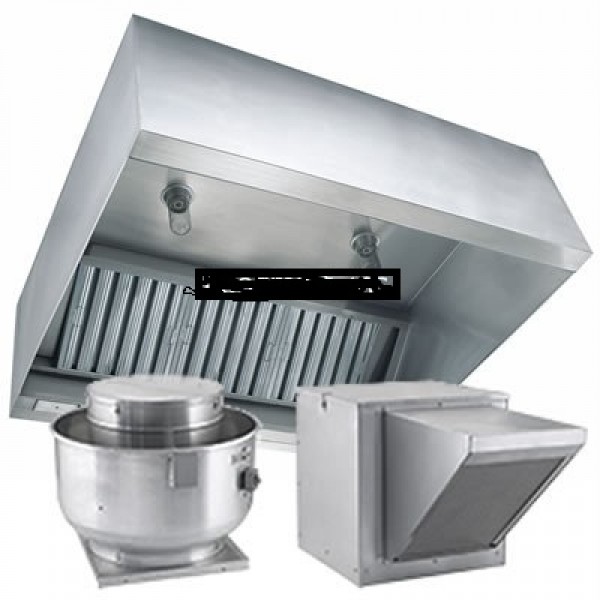Ventilation Systems for Kitchen Bella Kitchen’s comprehensive line of kitchen ventilation products are designed to meet the varying needs of foodservice establishments. Whether you are working on a school cafeteria, restaurant, industrial cooking process, or otherwise, Bella Kitchens has the products and resources to meet your ventilation requirements. Additionally, Bella Kitchens offers exhaust fans, Kitchen Chimneys, make-up air units and more to create a complete, quality kitchen ventilation system. Bella Kitchen’s hoods are used over cooking equipment that produces heat and grease-laden effluent. Wall canopy hoods are intended to be used when the cooking equipment is placed against a wall. A wide variety of sizing and hood options, along with several accessories, make Bella Kitchens the right choice to meet your range of design requirements.
Two Types of HoodsType I Hoods:Used if you are exhausting grease-laden air. Type II Hoods:Used if you are exhausting non-grease-laden air (heat/condensate). Type I Hoods: What hood style do I need?Is your cooking equipment against a wall?Wall canopy hoods:Most common when the cooking battery is against a wall. Proximity (backshelf) hoods:Used when you have a low ceiling and/or it is to be placed over light to medium duty cooking equipment such as ranges, griddles and fryers. These hoods are typically used in quick service restaurants. Is your cooking equipment located in the open (example, island)?Single-island hoods:Used when the cooking battery is in one row, not against a wall. Double-island hoods:Used when the cooking battery is in two back-to-back rows, not against a wall. Type II Hoods: What hood style do I need?Heat and fume:Heat-only hoods are typically used for oven applications. Condensate:Condensate hoods are typically used above Dishwasher Supplier in Pune. Total kitchen exhaust includes all grease particulate sizes as well as grease vapors. Grease is the by-product of commercial cooking processes that must be extracted from the effluent airstream via the kitchen ventilation system. Grease can be broken down into three different categories: Submicron particles:Produced when a drop of grease or water comes in contact with a hot surface and immediately burns off. Particle sizes range from 0.03 to 0.55 microns (smoke). Steam:Grease covered moisture and air mixture is produced by the long burning of cold or frozen food on a hot cooking surface. Particle sizes range from 0.55 to 6.2 microns. Spatter:Larger more visible effluent that is produced during the cooking process. Particle sizes range from 6.2 to 150 microns. Research and testing has determined that a significant concentration of grease particles can be found in the submicron and steam phases. Most currently applied grease extraction devices remove very large grease particulate that is 10 to 150 microns in size (spatter phase), but are not capable of removing fine particulates that are found in the submicron and steam phases. Grease Extraction by Cooking Equipment TypeDifferent appliances and types of food will produce different amounts of grease, so there is a need for different levels of grease extraction efficiency. Bella Kitchens recommends filters for each type of cooking equipment. If there is a diverse cooking line-up, use the worst-case scenario for the type of filter used. Ready for fire!Cooking is the leading cause of residential building fires. An estimated average of 165,000 cooking fires occur annually, resulting in property loss, injuries and even death.Residential buildings typically rely on portable fire extinguishers and sprinkler systems to protect property and occupants. Portable extinguishers require early use and manual intervention to contain fires, while sprinkler systems act as a final measure of protection. The Fire Ready Hood is a dual-purpose device. It is a both a ventilation hood and a self-contained fire suppression system. The Fire Ready Hood is designed for use above residential style appliances in commercial settings, such as:
|
